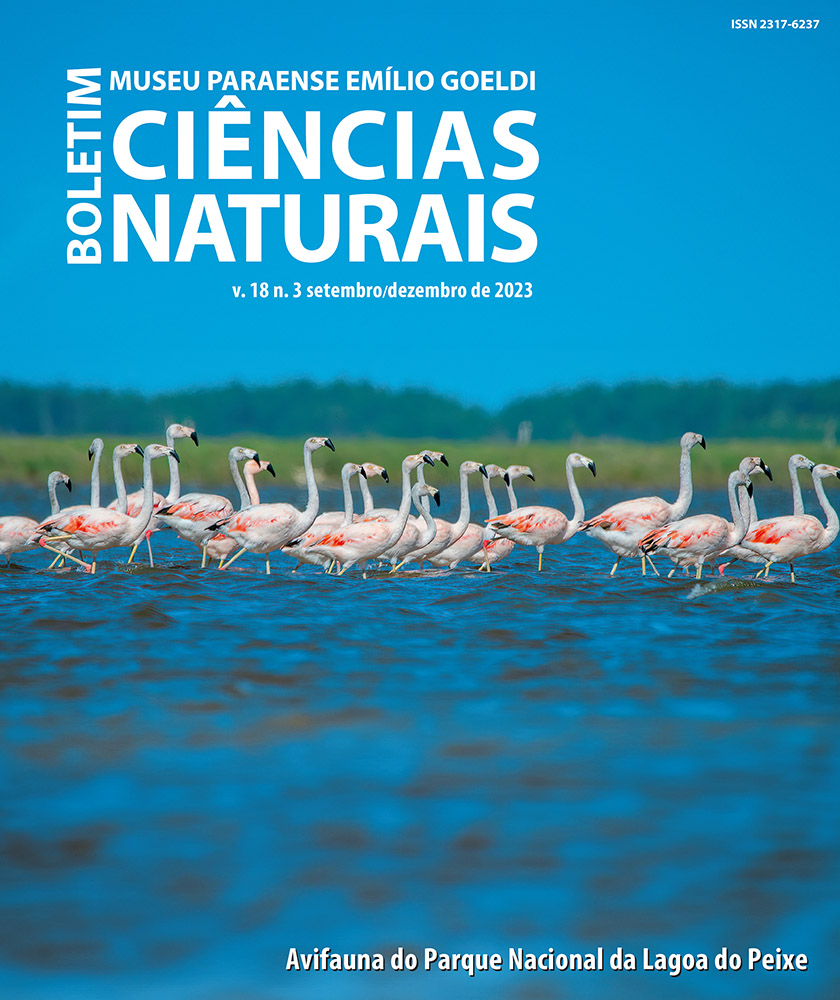Pitfall trap efficiency in sampling small vertebrates (Anura, Squamata, and Mammalia) in fragments of the Southeastern Atlantic Forest, Brazil
DOI:
https://doi.org/10.46357/bcnaturais.v18i3.893Keywords:
Amphibians, Lizards, Mammals, Sampling method, SnakesAbstract
Pitfall traps are a sampling method broadly used in studies with small terrestrial vertebrates. In this paper, we compared the efficiency of modified pitfall traps in sampling anurans, squamates, and mammals. In two forest fragments of the Seasonal Semi-deciduous Atlantic Forest, we set up 26 arrays of drift fences and pitfall traps, composed of four 30-liter buckets, each set up arranged in a ‘Y’ shape linked by a fence of 4 m in length and 0.5 m in height. We tested for the effect of an internal rim on the border of the buckets by comparing buckets with and without a rim on capture efficiency. In general, we did not observe any effect of the rims in capture efficiency, independently of the bucket position where the rim was present. Still, terminal buckets with rims were less efficient in capturing rodents. We hypothesized that the use of buckets with rims did not increase the capture of small vertebrates due to the animal’s ability to perceive the rim due to substrate instability. However, the pitfall trap efficiently captures small vertebrates, and we do not recommend using the internal rims.
Downloads
Published
Issue
Section
License
Publication means fully assigning and transferring all copyrights of the manuscript to the journal. The Liability Statement and
Assignment of Copyrights will be enclosed with the notice of acceptance. All the authors must sign the document and return it to the journal.








